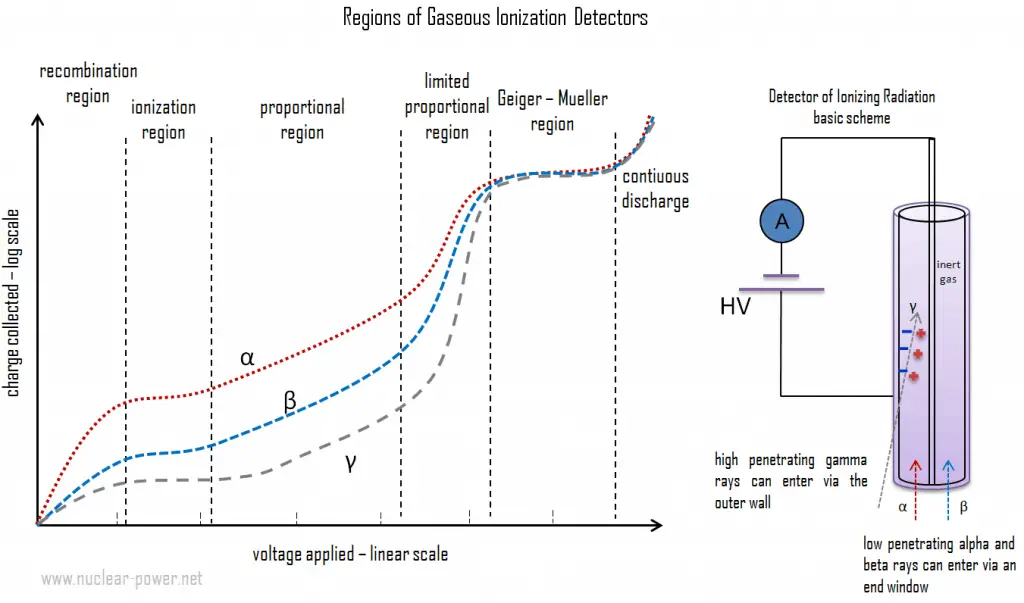The relationship between a detector’s applied voltage and pulse height is very complex. Pulse height and the number of ion pairs collected are directly related. As was written, voltages vary widely depending on the detector geometry, gas type, and pressure. The figure schematically indicates the different voltage regions for alpha, beta, and gamma rays. There are six main practical operating regions, where three (ionization region, proportional, and Geiger-Mueller region) are useful for detecting ionizing radiation. These regions are shown below. The alpha curve is higher than the beta and gamma curve from the recombination region to part of the limited proportionality region due to the larger number of ion pairs produced by the initial reaction of the incident radiation.

Ionization Region
In the ionization region, an increase in voltage does not cause a substantial increase in the number of ion pairs collected. The number of ion pairs collected by the electrodes equals the number of ion pairs produced by the incident radiation. It is dependent on the type and energy of the particles or rays in the incident radiation. Therefore, the curve is flat in this region, and the voltage must be higher than the point where dissociated ion pairs can recombine. On the other hand, the voltage is not high enough to produce gas amplification (secondary ionization). Detectors in the ionization region operate at a low electric field strength, so no gas multiplication occurs, and their current is independent of the applied voltage. They are preferred for high radiation dose rates because they have no “dead time,” a phenomenon that affects the accuracy of the Geiger-Mueller tube at high dose rates.